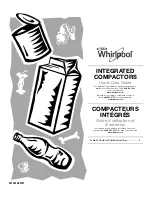
2 Operators Safety Rules and Practices
OPERATORS RESPONSIBILITY
*Safe operation is the responsibility of the operator.
*Read and understand operator’s manual.
*Know all functions of controls and instruments.
*Be alert to other personnel and hazardous conditions.
*Be alert to unusual or special operating conditions and safety precautions.
*In hazardous areas, use only forklifts approved for those areas.
*Always where the provided seat belt when operating forklift.
OPERATORS MUST BE TRAINED AND UNDERSTAND
*Equipment operation.
*Control locations and functions, and what problems will occur when handled
improperly.
*Traveling.
*Loading.
*Mechanical limits.
*Center of gravity.
*Stability.
*Operating conditions.
*Nameplate information.
*Warning signs.
TRAVELING
*Obey all traffic rules and speed limits.
*Keep to the right.
*Always keep your forklift under control and stay a safe distance, based on
speed, from other vehicles.
*Operate at speed that allows stopping in a safe manner.
*Yield to pedestrians and emergency vehicles.
*Be alert to blind spots, and other locations where vision is not clear.
*Be sure you have a clear view of your path of travel.
*When load obstructs view of forward travel, travel backward.
*Cross railroad tracks at an angle, do not park closer than 6 ft.
*Go up and down grades slowly and carefully, tilt forks back.
*Avoid turning on grades, ramps or inclines.
*Stopping distances going down grades will be longer.
*Slow down and allow enough room at the bottom of grades to stop.
*Travel with forks raised, only far enough to clear road surface, and tilted back.
8 Inspection
*Fuel
Do not use open flame to check fuel level. When refueling, stop engine.
Replace fuel cap before starting engine. If spillage happens, be sure it has all
been absorbed or evaporated before starting engine.
*Engine oil
Check and fill, following manufacturers instruction.
*Hydraulic oil
Check and fill, if needed, with recommended hydraulic
oil.
*Lights
If forklift has lights, they must be in good condition and work.
*Mast chains
Check mast chains for damage or missing parts.
*Brakes
When the engine is off the brakes will engage.
DOUBLE REACH (Optional)
1) Ensure the scissor cylinder lock nut is tight. (FIG 1)
2) Ensure the stop bolts are properly contacting the ITA board. (FIG 2)
3) Inspect the scissor assembly for structural cracking.
INSPECTION WITH ENGINE RUNNING
Do this inspection in a large, open area (away from people, walls, ceil-
ings, and other equipment).
*Travel
Bring forklift to a complete stop before changing direction.
*Neutral position
When motion pedal is in neutral, drive wheels will not turn.
*Travel control
Push motion pedal away from you. The forklift should move forward.
As the pedal is pushed more, the the forklift should move faster.
Pull motion pedal toward you. The forklift should move backward. As the pedal
is pulled more, the the forklift should move faster.
44
11
Jam
Nut
FIG 1
Contact
FIG 2






























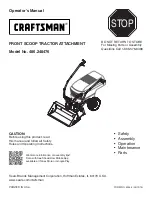


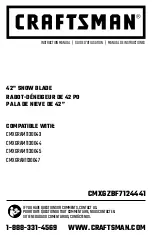
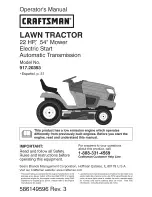
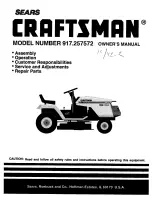
![Whirlpool [12:36:03] ?????????????????: GC900QPPB Use & Care Manual preview](http://thumbs.mh-extra.com/thumbs/whirlpool/12-36-03-gc900qppb/12-36-03-gc900qppb_use-and-care-manual_437149-01.webp)

